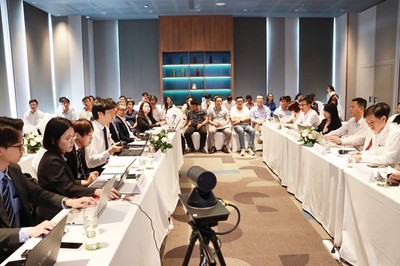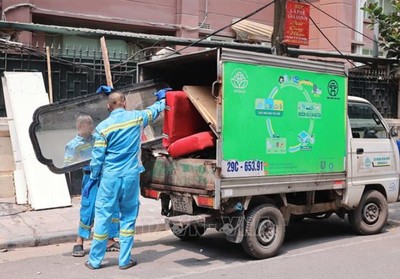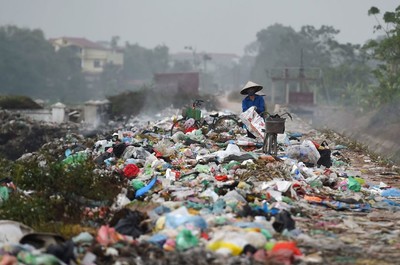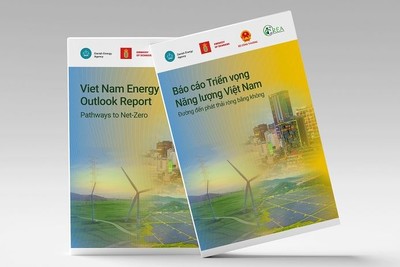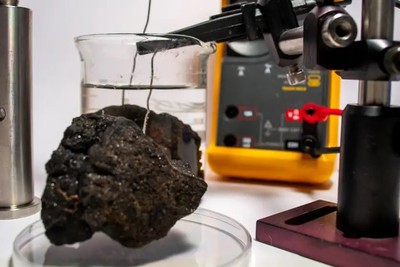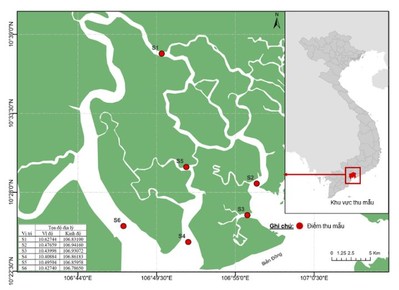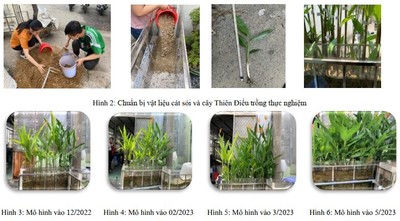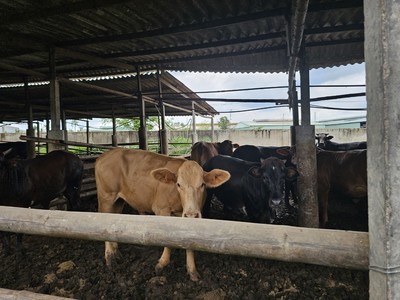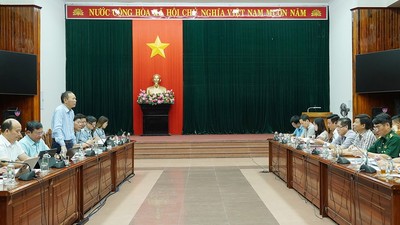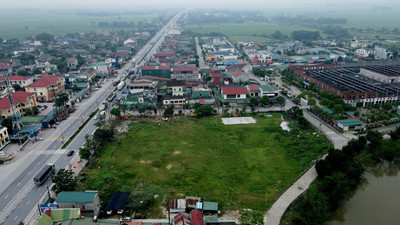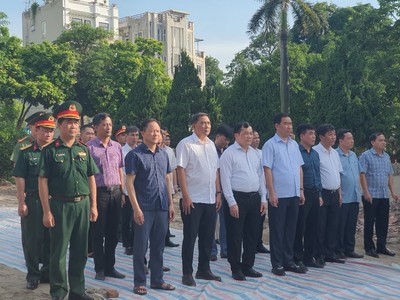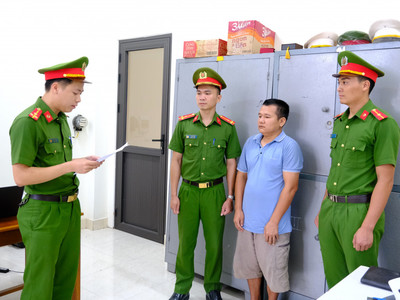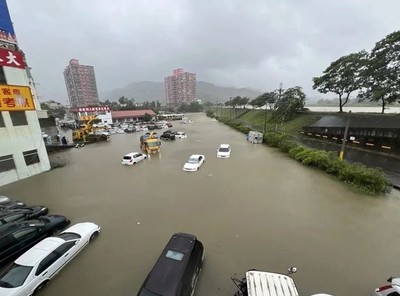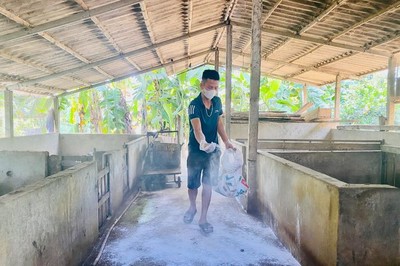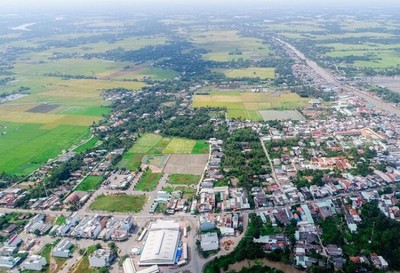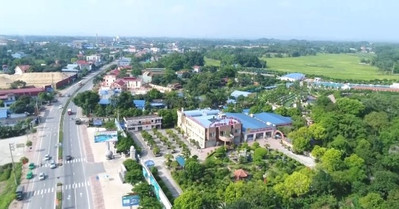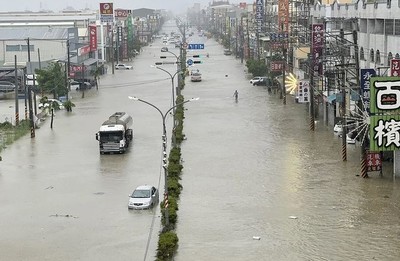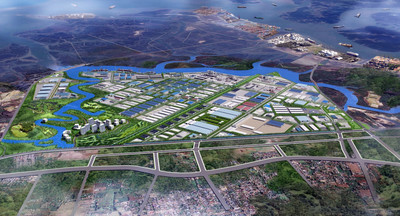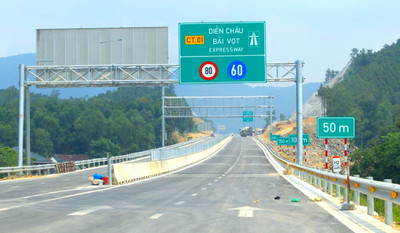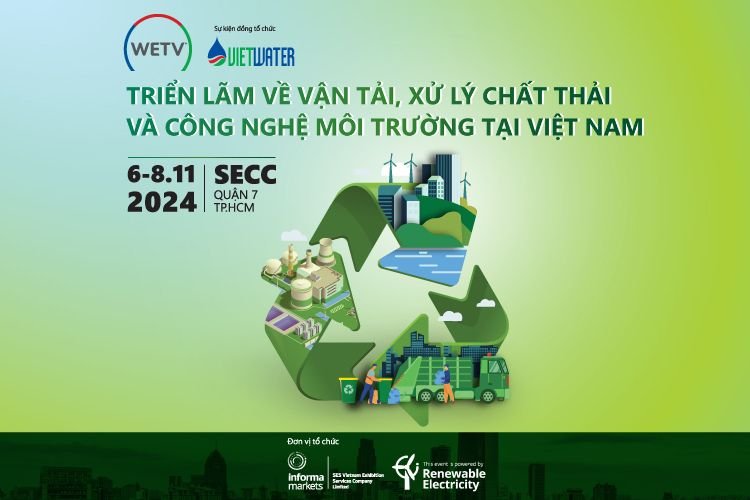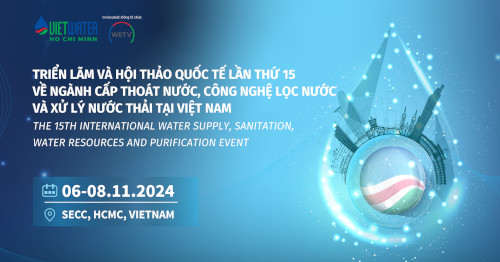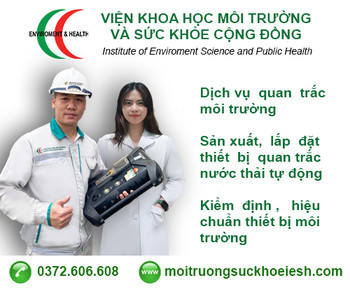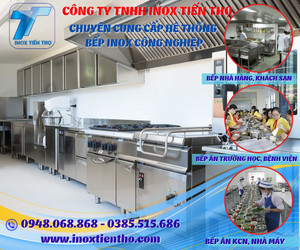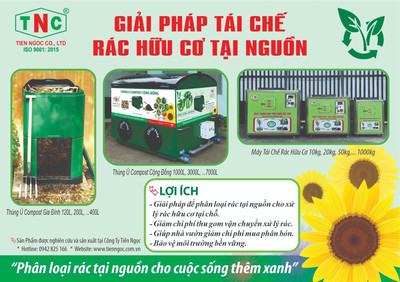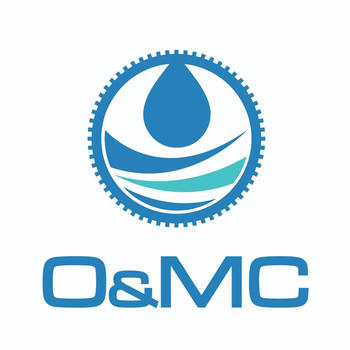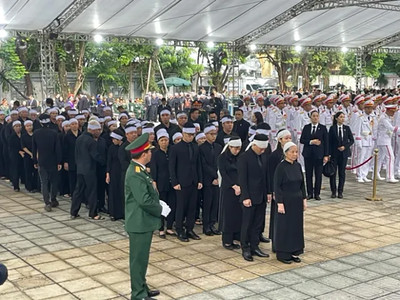Công bố quốc tế lĩnh vực môi trường số 30 - 2022
Trân trọng giới thiệu tới quý độc giả Công bố quốc tế lĩnh vực môi trường số 30 - 2022 với những nội dung chính như sau:
Về quản lý môi trường
- Mức độ và tần suất cháy rừng trong tương lai được xác định bởi thời tiết có thời tiết dẫn đến cháy dài nhất.
- Quản lý chất thải, COVID-19 và an toàn vệ sinh lao động: Thách thức, hiểu biết sâu sắc và bằng chứng.
- Người thắng và người thua về tính bền vững của năng lượng - Đánh giá toàn cầu về các Mục tiêu Phát triển bền vững.
- Thu hẹp nhanh chóng khoảng cách giữa thành thị và ngoại ô về nồng độ chất gây ô nhiễm không khí ở Bắc Kinh từ năm 2014 đến năm 2019.
- Các yếu tố quyết định tính bền vững về hành vi và môi trường của việc sử dụng hệ thống thông tin quản lý năng lượng dân cư.
- Hóa học môi trường, độc tính và đánh giá rủi ro sức khỏe của nước ngầm: Các chiến lược quản lý và tồn tại môi trường.
- So sánh các phương pháp thu gom chất thải khác nhau: Tác động môi trường và rủi ro nghề nghiệp.
- Đánh giá một cách hệ thống về đánh giá vòng đời của quản lý chất thải rắn: Các xu hướng và triển vọng phương pháp luận.
- Bằng chứng từ các ngành công nghiệp gây ô nhiễm nặng ở Trung Quốc.
Về môi trường đô thị
- Đánh giá môi trường đối với chất thải hữu cơ đô thị và bùn được xử lý bằng phương pháp cacbon hóa thủy nhiệt.
- Phát triển phương pháp phân tích cụm để xác định các siêu âm lượng mưa mô hình và ứng dụng của nó ở quy mô trường lượng mưa đô thị.
- Đánh giá chiến lược về hệ thống quản lý chất thải rắn đô thị (chất thải rắn sinh hoạt) tập trung vào các chính sách, tiêu chí lựa chọn và kỹ thuật để chất thải thành giá trị.
- Đánh giá cao các dịch vụ điều tiết của hệ sinh thái đô thị theo hướng định giá nhà toàn diện hơn.
- Đánh giá phối cảnh về tuyến đường biến chất thải rắn thành năng lượng của thành phố: Đặc điểm, chiến lược quản lý và vai trò trong nền kinh tế tuần hoàn.
- Các hạt siêu mịn có tính axit xung quanh ở các khu vực sử dụng đất khác nhau ở hai thành phố đại diện của Trung Quốc.
- Cấu trúc cộng đồng vi sinh vật trong không khí và khả năng xác định mầm bệnh qua các phần nhỏ kích thước PM và các mùa trong bầu không khí đô thị.
- Tác động của phơi nhiễm môi trường đô thị đối với sức khỏe: Đánh giá gánh nặng tử vong có thể xảy ra ở thành phố Sao Paulo, Brazil.
- Vai trò của vi sinh vật trong tích lũy sinh học kim loại nặng trong chất thải rắn đô thị: Tác động đến thực vật và con người.
- Ảnh hưởng của tỷ lệ chiều cao, mật độ và diện tích sàn xây dựng dân cư đến môi trường nhiệt trong nhà ở Singapore.
Về môi trường khu công nghiệp
- Khu dân cư gần với ô nhiễm công nghiệp và mật độ chụp nhũ ảnh.
- Ảnh hưởng của độ mặn đến hệ thống sinh học đồng hóa amoni trong xử lý nước thải siêu kiềm.
- Khả năng phục hồi sinh học ion canxi từ nước thải công nghiệp nhờ Bacillus amyloliquefaciens DMS6.
- Thay đổi giai đoạn: Một cách tiếp cận mới để xác định quá trình chuyển đổi công nghiệp.
- Loại bỏ thành công phenol khỏi nước thải công nghiệp bằng cách sử dụng bộ tiếp xúc màng sợi rỗng gốm kỵ nước mới với độ ổn định cao đáng kể.
- Đánh giá rủi ro sức khỏe trong bầu khí quyển gần khu phức hợp công nghiệp hóa dầu: Đo khả năng oxy hóa và gánh nặng oxy hóa.
- Động lực của nguồn tài trợ nghiên cứu công toàn cầu về biến đổi khí hậu, năng lượng, giao thông vận tải và khử cacbon trong công nghiệp.
- Con đường thu hồi chất thải thép công nghiệp: Sản xuất chất xúc tác được hỗ trợ sáng tạo và ứng dụng của nó trong các nghiên cứu khử crôm hóa trị sáu.
- Hệ thống đánh giá bổ sung AQI-V để quản lý và kiểm soát toàn diện chất lượng không khí trong các khu công nghiệp hóa chất.
Dưới đây là tên và phần tóm tắt của các nghiên cứu bằng Tiếng Anh
QUẢN LÝ MÔI TRƯỜNG
1. Future wildfire extent and frequency determined by the longest fire-conducive weather spell
Science of The Total Environment, Volume 830, 15 July 2022, 154752
Abstract
Great efforts have been made to understand the impacts of a changing climate on fire activity; however, a reliable approach with high prediction confidence has yet to be found. By establishing linkages between the longest duration of fire-conducive weather spell and fire activity parameters, this study projected annual area burned (AAB), annual number of fires (ANF), and annual maximum fire size (MFS) into the future. We found that even though the rates of change differ, the spatial pattern of changes for all three parameters are similar by Canadian ecozone. Areas with the lowest fire activity may see higher rates of change in comparison to high fire activity areas. By end of the century, the changes of AAB and MFS for the study area are projected to be about four and five times that of the baseline respectively, while ANF could almost double.
2. Waste management, COVID-19 and occupational safety and health: Challenges, insights and evidence
Science of The Total Environment, Volume 831, 20 July 2022, 154862
Abstract
Different fields of knowledge have faced challenges due to the COVID-19 pandemic. Essential public services serving the population's needs were maintained. Previous studies have addressed the possibility of health hazards from handling solid waste (SW) among trash collection service workers, without introducing any data proving or dismissing those risks. Occupational health is stated in at least 2 of the 17 Sustainable Development Goals. Pearson Coefficient (r) was employed to analyze the correlation between the number of cases of COVID-19 in SW collection workers in the city of São Paulo, considering the district city halls where the COVID-19 patients live and the SW collection workers' route, from March 2020 to March 2021. Employees who collected wastes with COVID-19: 2% collected healthcare SD, 4% worked at the waste transshipment stations, 10% household variable route collection, and 83% in defined routes collecting household wastes. Positive and moderate correlation was confirmed (r = 0.59) between the total number of COVID-19 cases and the trash collection routes, and the number of contaminated COVID-19 workers from their trash collection routes. Considering concessionary companies separately, the correlation found in the Southeastern grouping is 0.77 (positive and high correlation), and the correlation found in the Northwestern grouping is 0.18 (positive but insignificant correlation). The Northwestern grouping's concessionary had implemented more effective occupational health and safety management policies and disclosed them among their stakeholders. Results suggest concern related to occupational health and safety for SW collection workers and substantiating the vulnerability of this essential activity during the pandemic.
3. Winners and losers of energy sustainability—Global assessment of the Sustainable Development Goals
Science of The Total Environment, Volume 831, 20 July 2022, 154945
Abstract
Energy sustainability plays a crucial role in achieving environmental sustainability, hence, underpins climate change mitigation. Yet, studies assessing the overarching effect of existing sustainability frameworks on energy production and consumption are limited. Here, we provide comprehensive assessment of energy sustainability across 217 countries and territories spanning 1960–2019. Using 11 targets and 15 indicators of the Sustainable Development Goals (SDGs), we present winners and losers of energy sustainability by accounting for pre-millennium development goals (MDGs), MDGs, and SDGs across income groups. While the inception of the 2030 agenda has improved energy and environmental performance across economies, low-income countries are still struggling to meet several of the SDGs. We find that sustained economic growth with reduced income inequality improves energy sustainability in developing economies. However, sustainable climate policies that reduce trade-offs between energy resources and environmental threats are highly recommended in climate-prone regions that depend heavily on water resources to boost power generation capacity.
4. Role of subterranean microbiota in the carbon cycle and greenhouse gas dynamics
Science of The Total Environment, Volume 831, 20 July 2022, 154921
Abstract
Subterranean ecosystems play an active role in the global carbon cycle, yet only a few studies using indirect methods have focused on the role of the cave microbiota in this critical cycle. Here we present pioneering research based on in situ real-time monitoring of CO2 and CH4 diffusive fluxes and concurrent δ13C geochemical tracing in caves, combined with 16S microbiome analysis. Our findings show that cave sediments are promoting continuous CH4 consumption from cave atmosphere, resulting in a significant removal of 65% to 90%. This research reveals the most effective taxa and metabolic pathways in consumption and uptake of greenhouse gases. Methanotrophic bacteria were the most effective group involved in CH4 consumption, namely within the families Methylomonaceae, Methylomirabilaceae and Methylacidiphilaceae. In addition, Crossiella and Nitrosococcaceae wb1-P19 could be one of the main responsible of CO2 uptake, which occurs via the Calvin-Benson-Bassham cycle and reversible hydration of CO2. Thus, syntrophic relationships exist between Crossiella and nitrifying bacteria that capture CO2, consume inorganic N produced by heterotrophic ammonification in the surface of sediments, and induce moonmilk formation. Moonmilk is found as the most evolved phase of the microbial processes in cave sediments that fixes CO2 as calcite and intensifies CH4 oxidation. From an ecological perspective, cave sediments act qualitatively as soils, providing fundamental ecosystem services (e.g. nutrient cycling and carbon sequestration) with direct influence on greenhouse gas emissions.
5. Rapid narrowing of the urban–suburban gap in air pollutant concentrations in Beijing from 2014 to 2019
Environmental Pollution, Volume 304, 1 July 2022, 119146
Abstract
Understanding the spatial patterns of atmospheric pollutants in urban and suburban areas is important for evaluating their effects on regional air quality, climate, and human health. The analyses of pollutant monitoring data of the China National Environmental Monitoring Center revealed that the differences in the concentrations of ambient O3, PM2.5, NO2, SO2, and CO between urban and suburban areas rapidly decreased from 2014 to 2019 in Beijing. Considering the negligible urbanization and interannual meteorological changes during the study period, the results reveal a quick response of the urban-to-suburban difference (ΔUrban-Suburban) in the ambient pollutants concentrations to emission reduction measures implemented in China in 2013. However, owing to the efficient O3 formation in summer in urban areas in recent years, we observed a more rapid decrease in the ΔUrban-Suburban in O3 concentration in summer (64.8%) than in winter (16.1%). In addition, the ΔUrban-Suburban in daytime summer O3 changed from negative in 2014–2018 to positive in 2019, indicating that the daytime O3 concentration in urban areas exceeded that in suburban areas. Furthermore, instantaneous changes in ΔUrban-Suburban in air pollutants were more sensitive to meteorological variations in 2014 than in 2019. The results indicate a less significant role of regional air mass transport in the spatial variability of pollutants under a future scenario of strong emission reduction in China.
6. Behavioural and environmental sustainability determinants of residential energy management information systems use
Journal of Cleaner Production, Volume 356, 1 July 2022, 131778
Abstract
Notwithstanding appliance energy efficiency and advances in Smart Home Technologies (SHT), residential energy consumption is still on the rise. Residential Energy Management Information Systems (REMIS) that enable users to monitor, analyse, and benchmark energy use and consumption can contribute to energy savings and mitigate unnecessary consumption. Nevertheless, the withdrawal of Microsoft's Hohm and Google's Powermeter and the low adoption rate of smart meters in the US, UK, Canada, and Australia signposts missed opportunities in reducing energy intensity. Thus, the question of how to influence the successful adoption of REMIS and other related sustainable technologies captivates both researchers and practitioners. In this paper, based on a conceptual model developed by integrating the theory of planned behaviour and pro-environment behaviour research, we analysed survey data from 208 Singapore testbed eco-town apartment precinct households. The study found that environmental altruism and sustainability information exposure induce normative pressures towards REMIS use and a sense of volitional control over REMIS use. Furthermore, presence of children and the apartment size moderate the causal relationship between attitude, subjective norm and perceived behavioural control concerning REMIS adoption. These findings offer theoretical and empirical insights to cleaner production, residential energy consumption research and other sustainable technologies use that can contribute to UN's Sustainable Development Goals (SDGs). It also discusses the strategic, policy and design implications for energy and technology providers, and residential energy users.
7. Environmental chemistry, toxicity and health risk assessment of groundwater: Environmental persistence and management strategies
Environmental Research, Available online 16 July 2022, 113884
Abstract
Groundwater is a significant supply of freshwater for the world's population, being used for residence, agricultural, and industrial purposes. One-third of the world's population relies on groundwater for drinking applications. Groundwater pollution is a global issue with serious consequences for human health and the environment. It needs a thorough understanding because access to safe drinking water is a basic human right. However, groundwater quality is being threatened by urbanisation, agricultural activities, industrial activities, and climate change, among others. Pollutants like hydrocarbons, toxic metals, pesticides, microplastics, nanoparticles and other emerging contaminants mean a risk to human health and sustainable socioeconomic development. To ensure sustained groundwater usage to assess, monitor, and regulate groundwater quality issues is essential. Excess withdrawal alters groundwater flow together with contaminants like uranium, radon, radium, salinity, arsenic and fluoride, resulting in mediocre water quality. Consequently, chemical and biological contaminants owing to domestic, industrial, and agricultural practices alter water quality and threaten human health. Controlling and management of groundwater pollution and related health risks require developing vulnerability, hazard, and risk maps.
The virtual special issue (VSI) "Environmental chemistry, toxicity, and health risk assessment of groundwater: Environmental persistence and management strategies” has focused on laboratory, field and modelling case studies related to environmental problems in fissured, porous, and karst aquifers. It has addressed sources, fates, effects and exposure of geogenic, anthropogenic, and emerging groundwater contaminants; physical, chemical and biological interactions (e.g., human activity and climate change); pollution, vulnerability, hazards and risk assessment; geochemical and environmental assessment abetted by heavy metals, radioisotopes and REEs; groundwater flow and quality modeling; geospatial, geostatistical and neural networking techniques, and reclamation, reuse, treatment and management of groundwater.
This VSI contains 32 research papers from 11 countries (India, UAE, China, Turkey, Portugal, Brazil, Mexico, Sri Lanka, Spain, Tunisia and Ghana) focussing on eight major areas: (1) Groundwater geochemistry, (2) Heavy metal pollution, (3) Wastewater treatment, (4) Land vulnerability, (5) Irrigation water quality, (6) Health risk evaluation, (7) Remote sensing, and (8) Groundwater modelling.
8. A comparison of different waste collection methods: Environmental impacts and occupational risks
Journal of Cleaner Production, Available online 16 July 2022, 133145
Abstract
Municipal waste management, especially in developed countries, has a significant impact on the environment and humans that need to be quantified and mitigated. This study aims to investigate and compare the environmental impact and occupational risks of the following three municipal waste collection methods in Italy: street bins, door-to-door collection, and a smart bins system. Six waste categories (paper, plastics, glass, metal, organic materials, and residual waste) are analysed.
Environmental performances are calculated by the life cycle assessment (LCA) and material and flow analysis (MFA) methodologies. The ergonomic analysis is based on direct observation of municipal waste collectors and the application of standard assessment methods as RULA, NIOSH, and Snook Ciriello.
Results
show that the smart bins collection method is environmentally more effective in all the impact categories considered, thanks to the better quality of collected waste. The residual waste flow directed to landfills has a lower value in the case of smart bins (36.63%) in comparison with door-to-door (52.90%) and street bins (89.56%). The use of smart bins allows higher environmental benefits, passing for the Climate Change impact category from −2.80E+01 kg of CO2eq. of the door-to-door system and −2.74E+01 kg of CO2eq. of street bins to −7.13E+01 kg of CO2eq. of smart bins. Regarding the transport phase, the smart bins system determines a reduction of the impact of about 60% if compared with the door-to-door system for all the impact categories considered.
On the other hand, acceptable occupational risks result in street and smart waste collection methods, while poor ergonomics conditions are observed during the door-to-door collection. Containers lifting and emptying are the most critical tasks.
9. A systematic review of life cycle assessment of solid waste management: Methodological trends and prospects
Science of The Total Environment, Volume 831, 20 July 2022, 154903
Abstract
Solid waste disposal has led to increasing concerns over resource, health, and environmental problems. These issues have been investigated using the Life Cycle Assessment (LCA) technique which helps identify the roots of varying hazards and allows decision-makers to improve the environmental performance of waste management practices. However, there is a lack of review studies that conducted meta-analysis related to developments in critical methodological steps of LCA on solid waste management. To fill this gap, this review paper examines 15 elements comprising the preference of journals, 13 LCA method-related characteristics, and economic assessment. Insights on the limitations and current practices of LCA applications, along with trends for future research, are provided. 240 studies on the LCA of SWM from 2009 until 2020 were systematically reviewed and classified into two major year-groups (i.e., 2009–2014 and 2015–2020) to investigate the trend changes. Among the studied elements, it is found that energy-related applications are on the increase in LCA studies on solid waste management. Anaerobic digestion facilities nearly double in appearance in the second year-group (2015–2020). There is also a more frequent occurrence of certain characterization methods like ReCiPe and CML. Functional units become more diverse, but are overall mostly defined on a mass basis. A frequently identified issue of many LCAs on solid waste management is the ambiguity of data sources such as out-of-date literature or inconsistent geographical references. By addressing issues of methodological standardization, this review study provides a basis to further increase the reliability of results of future LCA studies on solid waste management.
10. Management system for engineering and decoration waste: An exploratory study in Shenzhen
Journal of Environmental Management, Volume 314, 15 July 2022, 115085
Abstract
Rapid urban development and renewal have caused large amounts of engineering and decoration waste to be produced. These wastes pose serious risks to the environment. Disposal and management of this waste have become problematic. A mean of 11.4 × 106 m3 of engineering and decoration waste will be produced each year in Shenzhen between 2018 and 2035. Engineering and decoration waste are currently mainly sent to landfill, but this requires large amounts of land and can cause serious environmental pollution. There are problems including irregular emissions, a disorderly transportation market, and inadequate disposal facilities, so policies for managing engineering and decoration waste need to be established. In this study, a hybrid approach was used to develop a system for managing the whole engineering and decoration waste system (generation, collection & transportation, and disposal). The system was developed after determining waste emission and disposal requirements through site visits, clarifying problems involved in waste collection and transportation through interviews, identifying suitable management practices in an expert seminar, and developing a management system through desktop surveys. It was found that new buildings produce 0.02–0.04 (m3 waste)/(m2 building) and 0.11–0.13 (m3 decoration waste)/(m2 building) and that emission limits are required. Construction enterprises employ private trucks to transport waste, and illegal dumping occurs. Directed collection and transportation is required. Public welfare requires a mechanism for managing engineering and decoration waste with clear responsibilities. Government-authorized construction and operation should be explored and implemented. A propagable engineering and decoration waste management system is proposed with three management modules, generation, collection & transportation, and disposal, to act as a strategy for improving engineering and decoration waste.
11. Applications of IoT for optimized greenhouse environment and resources management
Computers and Electronics in Agriculture, Volume 198, July 2022, 106993
Abstract
The role of Internet-of-Things (IoT) in precision agriculture and smart greenhouses has been reinforced by recent R&D projects, growing commercialization of IoT infrastructure, and related technologies such as satellites, artificial intellige nce, sensors, actuators, uncrewed aerial vehicles, big data analytics, intelligent machines, and radio-frequency identification devices. Even though the integration of intelligent technologies offers unlimited potential in precision commercial agriculture, optimal resource management remains a challenge considering that IoT infrastructure is unevenly distributed across the world and concentrated in high-income countries. The utilization of IoT technologies in smart greenhouses often involves a tradeoff between the cost of agricultural production, environmental conservation, ecological degradation, and sustainability. The installation of IoT infrastructure is capital-intensive and often translates to higher energy demand, that elevates the risk for climate change. The widespread use of IoT sensors and networks also increases new challenges in the management of electronic waste, depletion of finite resources, and destruction of fragile ecosystems, resulting in climate change. the integration of IoT systems in greenhouses would be augmented by the global deployment of advanced 5G technology and Low-Earth Orbit (LEO) constellation broadband internet with low latency and high speeds. Intelligent application of agrochemicals could yield significant savings ($500/acre or more), while need-based irrigation and fertilizer application would help improve crop yields. Globally, the deployment of IoT infrastructure would yield about $500 billion of added value to the GDP by 2030. The forecasted economic benefits affirm that the applications of IoT for optimized greenhouse environment and resources management were sustainable, and any potential risks are incomparable to the long-term benefits in commercial agriculture. The review article contributes new insights on the role of IoT in agriculture 4.0, the challenges, and future prospects for developing nations, which lacked the resources to invest in precision agriculture technologies.
12. Sustainable management of municipal solid waste through waste-to-energy technologies
Bioresource Technology, Volume 355, July 2022, 127247
Abstract
Increasing municipal solid waste (MSW) generation and environmental concerns have sparked global interest in waste valorization through various waste-to-energy (WtE) to generate renewable energy sources and reduce dependency on fossil-derived fuels and chemicals. These technologies are vital for implementing the envisioned global "bioeconomy” through biorefineries. In light of that, a detailed overview of WtE technologies with their benefits and drawbacks is provided in this paper. Additionally, the biorefinery concept for waste management and sustainable energy generation is discussed. The identification of appropriate WtE technology for energy recovery continues to be a significant challenge. So, in order to effectively apply WtE technologies in the burgeoning bioeconomy, this review provides a comprehensive overview of the existing scenario for sustainable MSW management along with the bottlenecks and perspectives.
13. Green Supply Chain Management: A Theoretical Framework And Research Directions
Computers & Industrial Engineering, Available online 14 July 2022, 108441
Abstract
Practitioners and academicians dedicate significant attention to tackling initiatives and executing mechanisms to address society’s environmental concerns. Further, organizations and researchers recognize that there is a need to implement green supply chain management (GSCM) practices as a part of green strategy. To date, embedding a sustainability dimension into supply chain management remains a challenge for organizations given the lack of systematic knowledge of the key dimensions of GSCM practices, the factors that influence the implementation of GSCM practices, and the benefits that organizations gain through the implementation of such practices. To address this problem, this study reviews 156 research articles published between 1997 and 2021 in the GSCM literature, and offers a theoretical framework that synthesizes and integrates the knowledge acquired from the reviewed literature. This framework includes various dimensions of GSCM practices identified in the past research studies, the antecedents that influence implementation of GSCM practices, and the outcomes of implementation of such practices. Further, this study offers theoretical and practical perspectives to support future research utilizing a research model as a baseline to guide organizations in the understanding of the primary GSCM attributes, their predictors, and benefits.
14. Tracing the inclusion of health as a component of the food-energy-water nexus in dam management in the Senegal River Basin
Environmental Science & Policy, Volume 133, July 2022, Pages 74-86
Abstract
Dam development improves water, food, and energy security but often with negative impacts on human health. The transmission of dam-related diseases persists in many dammed catchments despite treatment campaigns. On the Senegal River Basin, the transmission of Schistosoma spp. parasites has been elevated since the construction of dams in the late 1980's. We use narrative analysis and qualitative content analysis of archival documents from this setting to examine health as a component of the food-energy-water (FEW) nexus and understand priorities and trade-offs between sectors across the policy-to-practice continuum. We find that health is recognized as an important component of river basin development, but that priorities articulated at the policy level are not translated into management practices. Incorporating health as a management objective is possible without imposing substantial trade-offs to FEW resources. Coordinated research and surveillance across transboundary jurisdictions will be necessary to inform decision-making on how to operate dams in ways that mitigate their negative health impacts.
15. How does economic growth target affect corporate environmental investment? Evidence from heavy-polluting industries in China
Environmental Impact Assessment Review, Volume 95, July 2022, 106799
Abstract
Economic growth targets management is the driving force behind China's phenomenal economic achievement over the past decades. However, how it affects corporate environmental behavior remains ambiguous. Based on the data of China's A-share listed companies in the heavy-polluting industries from 2009 to 2019, this study sheds light on the effect of economic growth targets on corporate environmental investment. We find that corporates tend to crowd out their investment in environmental conservation when local governments are under high pressure to address growth targets. It suggests that corporates arrange their investment activities to cope with the distortion effect of government intervention. Consistent with our expectation, evidence shows that corporate environmental investment decreases given that competition on economic growth target drives local officials to relax environmental regulation intensity, especially for cities with high-promotion-incentives officials. Moreover, an interesting finding is that such an adverse effect is greater for SOEs, while ownership heterogeneity does not exist or is small when local officials have stronger promotion incentives. This study not only provides a deeper insight into the role of government intervention in corporate investment decisions, but also contributes to designing better official evaluation systems to achieve sustainable development in emerging economies.
16. Sustainable management of municipal solid waste through waste-to-energy technologies
Bioresource Technology, Volume 355, July 2022, 127247
Abstract
Increasing municipal solid waste (MSW) generation and environmental concerns have sparked global interest in waste valorization through various waste-to-energy (WtE) to generate renewable energy sources and reduce dependency on fossil-derived fuels and chemicals. These technologies are vital for implementing the envisioned global "bioeconomy” through biorefineries. In light of that, a detailed overview of WtE technologies with their benefits and drawbacks is provided in this paper. Additionally, the biorefinery concept for waste management and sustainable energy generation is discussed. The identification of appropriate WtE technology for energy recovery continues to be a significant challenge. So, in order to effectively apply WtE technologies in the burgeoning bioeconomy, this review provides a comprehensive overview of the existing scenario for sustainable MSW management along with the bottlenecks and perspectives.
MÔI TRƯỜNG ĐÔ THỊ
1. An environmental assessment for municipal organic waste and sludge treated by hydrothermal carbonization
Science of The Total Environment, Volume 828, 1 July 2022, 154474
Abstract
Climate change is the world's greatest challenge today, the reason why it is urgent to optimize industrial processes and find new renewable energy sources. Hydrothermal carbonization (HTC) is one of the Waste-to-Energy technologies with greater projections due to its operative advantages. However, for its large-scale implementation, there are challenges related to the variability of the composition of the waste biomass and the seasonal and geographical availability. This research applied the Life Cycle Analysis methodology to evaluate the environmental impacts caused by three biomasses blends as raw material in the HTC process at laboratory scale. The blends analyzed considered different organic fractions of municipal solid waste (food and pruning) and sewage sludge. The results showed that blend 1 had a lower environmental impact for the case of production in the experimental laboratory level, compared with blends 2 and 3. This is mainly due to its greater calorific value and mass yield, which allows obtaining more hydrochar compared with the other blends, increasing the energy efficiency of the process. Also, between 87.94% and 98.00% of the energy reduction is required to obtain neutral impacts regarding the energy requirements in the experimental laboratory level scenario and the Chilean energy matrix. The processing of blends in HTC has excellent potential in a context where municipal solid wastes have been disposed in sanitary landfills or dumps, as in most emerging countries. Since this study incorporated data from the literature, future studies should perform an elemental analysis to provide experimental and differentiated data.
2. Development of cluster analysis methodology for identification of model rainfall hyetographs and its application at an urban precipitation field scale
Science of The Total Environment, Volume 829, 10 July 2022, 154588
Abstract
Despite growing access to precipitation time series records at a high temporal scale, in hydrology, and particularly urban hydrology, engineers still design and model drainage systems using scenarios of rainfall temporal distributions predefined by means of model hyetographs. This creates the need for the availability of credible statistical methods for the development and verification of already locally applied model hyetographs. The methodology development for identification of similar rainfall models is also important from the point of view of systems controlling stormwater runoff structure in real time, particularly those based on artificial intelligence. This paper presents a complete methodology of division of storm rainfalls sets into rainfalls clusters with similar temporal distributions, allowing for the final identification of local model hyetographs clusters. The methodology is based on cluster analysis, including the hierarchical agglomeration method and k-means clustering. The innovativeness of the postulated methodology involves: the objectivization of clusters determination number based on the analysis of total within sum of squares (wss) and the Caliński and Harabasz Index (CHIndex), verification of the internal coherence and external isolation of clusters based on the bootmean parameter, and the designated clusters profiling. The methodology is demonstrated at a scale of a large urban precipitation field of Kraków city on a total set of 1806 storm rainfalls from 25 rain gauges. The obtained results confirm the usefulness and repeatability of the developed methodology regarding storm rainfall clusters division, and identification of model hyetographs in particular clusters, at a scale of an entire city. The applied methodology can be successfully transferred on a global scale and applied in large urban agglomerations around the world.
3. Phosphorus removal from municipal wastewater through a novel Trichosporon asahii BZ: Performance and mechanism
Chemosphere, Volume 298, July 2022, 134329
Abstract
A yeast BZ was screened from a laboratory-scale anaerobic/aerobic reactor and designated as Trichosporon asahii through 26S rDNA gene sequence analysis. The screened BZ abated over 70% of phosphorus in municipal sewage with 2–10 mg/L phosphorus in the appropriate conditions. The yeast BZ had strong adaptability to pH and the dissolved oxygen, but the cultivation temperature, carbon source, the ratio of C/P and the ratio of N/P had a critical influence on the phosphorus abatement performance of yeast BZ. The analysis of phosphorus concentration in the wastewater, cells, and extracellular polymeric substances (EPS) suggested that about 55%–66% of the removed phosphorus was in the yeast cells and 34%–45% in the EPS. The proposed probable metabolic mechanism of phosphorus in yeast BZ showed that EPS acted as a dynamic phosphorous transfer station, and most of phosphorus was transferred into yeast cells through EPS transfer station. These findings have crucial implications for the development of a promising stable and easy-operation biological phosphorus abatement process for municipal wastewater treatment.
4. A strategic review on Municipal Solid Waste (living solid waste) management system focusing on policies, selection criteria and techniques for waste-to-value
Journal of Cleaner Production, Volume 356, 1 July 2022, 131908
Abstract
The huge build-up of untreated Municipal solid waste (MSW) is one of the major problems of the modern world. The uncontrolled waste generation and its accumulation are due to the rapid population rise, rapid urbanization, and inefficient MSW management systems. An efficient and sustainable MSW management system is a necessity worldwide, especially in lower and middle-income countries. Efficient MSW management supports a country in preserving the environment and adapting to eco-friendly methods. The selection criteria for deciding on the suitable waste treatment methods are addressed using Economic Cost (EcC) & Environment Cost (EnC) analysis. This study effectively classifies the different waste treatment methods into conventional and non-conventional methods to explain the suitability and effectiveness of each method. Highlighting the concept of waste-to-value, further elaboration on waste-to-energy (generation of energy in the form of heat and electricity), waste-to-material (producing value-added products like slag, char, soil manures, bio-oils, chemicals, etc.) have been done. An estimation of the gap in the MSW management systems for the different income-levelled countries is presented based on the waste management policies and tactics employed by the governing bodies. The study also offers valuable suggestions to bridge the gap in MSW management between the high-income and low-income countries including new trends in technology. This review focuses on establishing the importance of an effective MSW management system to help in the sustainable development of countries throughout the world.
5. Valuing regulating services of urban ecosystems towards more comprehensive house pricing
Journal of Cleaner Production, Volume 357, 10 July 2022, 132030
Abstract
The appreciation of ecosystem service value has achieved remarkable results in recent years, but the existing economic methods are not comprehensive enough to account for the complexity of regulating services so that environmental accounting methods are needed to integrate monetary evaluations. Here, we propose a method combining the advantages of econometric model with the emergy accounting approach to provide a new way for the evaluation of so-called ecosystem regulating services. This new framework not only ensures the accuracy of value accounting but also realizes the monetization of ecosystem service value. The suggested method takes the housing prices in 284 cities in China from 2010 to 2018 as the research object and establishes the relationship between housing price and the value of urban ecosystem services by means of the "difference-in-difference” model. Results show that from 2015 to 2018, about 23.67% of the increase in housing prices derives from an assumed improvement of urban ecosystem services, and the average price of this part is 424.41 yuan. The average economic value of regulating services was estimated as 1.76 yuan per 1010 sej nationwide. An increase in the value of ecosystem services per unit results in a 0.0135% housing premium. It is a progress to realize market pricing rather than value measurement by separating the ecosystem service value from the already market-oriented real estate price. Results help design direction for future environmental urban planning and provide a basis for the implementation of relevant policies in the future, in so moving beyond the traditional pricing methods.
6. Perspective review on Municipal Solid Waste-to-energy route: Characteristics, management strategy, and role in circular economy
Journal of Cleaner Production, Volume 359, 20 July 2022, 131897
Abstract
The proper handling of Municipal Solid Waste (MSW) is critical due to its high generation rate and the potential to minimise environmental impacts by simultaneously reducing resource depletion and pollution. MSW utilization for recycling is important for transforming the linear economy model into a circular one. The current review analyses and categorises MSW to energy technologies into direct and indirect approaches taking the Circular Economy perspective. The direct approach involves incinerating MSW for heat recovery. The indirect approach, including thermochemical and biochemical processes, is more complicated but attractive due to the variety of the valorized products – such as syngas, bio-oil, biochar, digestate, humus. However, consensus on the best MSW treatment approach is yet to be established due to the inconsistency of assessment criteria in the existing studies. In the case of converting MSW to energy (Waste-to-Energy – W2E), its economic indicators, such as capital, compliance, and operation cost, are important criteria when implementations are considered. In the current work, the critical characteristics of technologies for the MSW to energy routes are scrutinised. In addition, the economic characteristics and the role of MSW in the circular bio-economy is also thoroughly evaluated. Methods to advocate the industrial adoption and important assessing aspects of W2E are proposed at the end of the review to address the environmental and resource management issues related to MSW – most notably dealing with the uncertainty in composition and amounts, the energy efficiency and the resource demands of the W2E processing.
7. Ambient acidic ultrafine particles in different land-use areas in two representative Chinese cities
Science of The Total Environment, Volume 830, 15 July 2022, 154774
Abstract
The adverse effects of acidic ultrafine particles (AUFPs) have been widely recognized in scientific communities. However, a handful of studies successfully acquired the concentrations of AUFPs in the atmosphere. To explore the AUFPs pollution, six extensive measurements were for the first time conducted in the roadside, urban and rural areas in Hong Kong, and the urban area in Shanghai between 2017 and 2020. The concentrations of AUFPs and UFPs, and the proportions of AUFPs in UFPs were obtained. The concentration of UFPs was the highest at the roadside site, followed by the urban site and the rural site, while the proportion of AUFPs in UFPs showed a contrary trend. The difference, on one hand, indicated the potential transformation of AUFPs from non-acidic UFPs during the transport and aging of air masses, and on the other hand, suggested the minor contribution of anthropogenic sources to the emission of AUFPs. In addition, the urban area in Hong Kong suffered from heavier pollution of UFPs and AUFPs than that in Shanghai. As for size distribution, the proportion of AUFPs in UFPs peaked in the size range of 35–50 nm and 50–75 nm in roadside and urban area, respectively. In rural area, the peak was observed in the size range of 5–10 nm, which might indicate the stimulation of new particle formation with the AUFPs as seeds. Furthermore, in the urban areas of Hong Kong and Shanghai, no significant difference was found for the geometric mean diameters of UFPs and AUFPs (p > 0.05). At last, the sulfuric acid proxy was positively correlated with the proportions of AUFPs in UFPs but not well correlated with the AUFPs levels. The results suggested the important roles of interaction between sulfuric acid vapor and non-acidic UFPs in AUFPs formation. Due to the significant reduction of sulfur dioxide in China during the last decade, the pollution of AUFPs in urban areas was alleviated.
8. Airborne microbial community structure and potential pathogen identification across the PM size fractions and seasons in the urban atmosphere
Science of The Total Environment, Volume 831, 20 July 2022, 154665
Abstract
As a vital component of airborne bioaerosols, bacteria and fungi seriously endanger human health as pathogens and allergens. However, comprehensive effects of environmental variables on airborne microbial community structures remain poorly understood across the PM sizes and seasons. We collected atmospheric PM1.0, PM2.5, and PM10 samples in Hefei, a typical rapidly-developing city in East China, across three seasons, and performed a comprehensive analysis of airborne microbial community structures using qPCR and high-throughput sequencing. Overall the bacterial and fungal abundances in PM1.0 were one to two orders of magnitude higher than those in PM2.5 and PM10 across seasons, but their α-diversity tended to increase from PM1.0 to PM10. The bacterial gene abundances showed a strong positive correlation (P < 0.05) with atmospheric SO2 and NO2 concentrations and air quality index. The bacterial gene abundances were significantly higher (P = 0.001) than fungi, and the bacterial diversity showed stronger seasonality. The PM sizes influenced distribution patterns for airborne microbial communities within the same season. Source-tracking analysis indicated that soils, plants, human and animal feces represented important sources of airborne bacteria with a total relative abundance of more than 60% in summer, but total abundance from the unidentified sources surpassed in fall and winter. Total 10 potential bacterial and 12 potential fungal pathogens were identified at the species level with the highest relative abundances in summer, and their abundances increased with the PM sizes. Together, our results indicated that a complex set of environmental factors, including water-soluble ions in PM, changes in air pollutant levels and meteorological conditions, and shifts in the relative importance of available microbial sources, acted to control the seasonal compositions of microbial communities in the urban atmosphere.
9. The impact of urban environmental exposures on health: An assessment of the attributable mortality burden in Sao Paulo city, Brazil
Science of The Total Environment, Volume 831, 20 July 2022, 154836
Abstract
Background
Currently, more than half of the global population lives in cities. Contemporary urban planning practices result in environmental risk factors (e.g. air pollution, noise, lack of green space, excess heat) that put health and well-being of city dwellers at risk and contribute to chronic diseases and premature death. Despite a growing body of evidence on adverse health impacts related to current urban and transport planning practices, especially for cities in the Global North, not much is known about associated health impacts in South American cities. Therefore, we estimated the mortality burden attributable to breaching internationally-recommended or locally-preferable exposure levels of urban planning related environmental exposures in Sao Paulo, Brazil.
Methods
We carried out a health impact assessment study, following the comparative risk assessment framework, to assess preventable mortality impacts of breaching exposure recommendations for air pollution, green spaces and temperature at the census tract (CT) level (n = 18,363). We also assessed the distribution thereof by socioeconomic vulnerability.
Results
We estimated that annually 11,372 (95% CI: 7921; 15,910) attributable deaths could be prevented by complying with recommended exposure levels. The largest proportion of preventable mortality was due to breaching air pollution limits (i.e. 8409 attributable deaths), followed by insufficient green space (i.e. 2593), and excess heat (i.e. 370). Adverse health impacts were larger in CTs of lower socioeconomic vulnerability, due to demographic profile, traffic density and residential area configurations.
Discussion
Not complying with the health limits for air pollution, green space and temperature exposures resulted in a considerable preventable mortality burden (i.e. 17% of total expected deaths) in Sao Paulo. This burden can be reduced by improving current urban and transport planning practices.
10. Role of microbes in bioaccumulation of heavy metals in municipal solid waste: Impacts on plant and human being
Environmental Pollution, Volume 305, 15 July 2022, 119248
Abstract
The presence of heavy metals in municipal solid waste (MSW) is considered as prevalent global pollutants that cause serious risks to the environment and living organisms. Due to industrial and anthropogenic activities, the accumulation of heavy metals in the environmental matrices is increasing alarmingly. MSW causes several adverse environmental impacts, including greenhouse gas (GHG) emissions, river plastic accumulation, and other environmental pollution. Indigenous microorganisms (Pseudomonas, Flavobacterium, Bacillus, Nitrosomonas, etc.) with the help of new pathways and metabolic channels can offer the potential approaches for the treatment of pollutants. Microorganisms, that exhibit the ability of bioaccumulation and sequestration of metal ions in their intracellular spaces, can be utilized further for the cellular processes like enzyme signaling, catalysis, stabilizing charges on biomolecules, etc. Microbiological techniques for the treatment and remediation of heavy metals provide a new prospects for MSW management. This review provides the key insights on profiling of heavy metals in MSW, tolerance of microorganisms, and application of indigenous microorganisms in bioremediation. The literatures revealed that indigenous microbes can be exploited as potential agents for bioremediation.
11. Effects of residential building height, density, and floor area ratios on indoor thermal environment in Singapore
Journal of Environmental Management, Volume 313, 1 July 2022, 114976
Abstract
Building height, building density, and floor area ratio are the three key parameters in urban planning. However, little is known about their impact on indoor thermal environments as compared with outdoor thermal environments. The study aimed to investigate their impact on indoor air temperatures in Singapore. Singapore's residential buildings were reviewed from the perspective of the three parameters, and the Envi-met model was employed for simulation after its accuracy was confirmed by field experiments. Indoor air temperatures under 18 scenarios were simulated and analyzed. The analytical results revealed that among the three parameters, the building density was the most influential. An increase in building density reduced the indoor temperature. In Singapore, the building density increases from 0.0625 to 0.766, which reduced the mean indoor temperature by 4.7 °C. The indoor temperature decreased slightly with an increase in building height. An increase in building height from 12 to 72 m produced an indoor temperature decrease of approximately 1.7 °C. The influence of floor area ratio on indoor air temperature was the most complex. For a fixed floor area ratio of 2, the indoor temperature first increased and then decreased with an increase in building density, which resulted in an indoor temperature difference of 2.1 °C when the building density increased from 0.141 to 0.766.
12. Multipoint characterization of the emission of odour, volatile organic compounds and greenhouse gases from a full-scale membrane-based municipal WWTP
Journal of Environmental Management, Volume 313, 1 July 2022, 115002
Abstract
Different environmental and social concerns can arise due to the generation of gaseous emissions during the treatment of urban wastewater. However, there is not an extensive knowledge about which are the main potential odour and greenhouse gas (GHG) emission sources in a wastewater treatment plant (WWTP) and their variability. In this study, a multipoint characterization of the gaseous emissions generated in a full-scale municipal WWTP located in Barcelona was conducted, aiming at identifying the main odour and GHG emission sources. The WWTP under study treats an average inlet flow of 33,000 m3 d−1 using a Ludzack-Ettinger system with Membrane BioReactor (MBR) technology, and it has installed a gas caption and treatment system consisting of a biotrickling filter followed by a conventional biofilter to treat part of the off-gases produced during the wastewater treatment. For this work, gaseous emissions characterization campaigns were conducted to assess the proper performance of the gas treatment unit and to estimate the emission factors referred to odorants and GHGs for the different emission sources and to assess the proper performance of the gas treatment system. Besides, a chemical characterization of the different volatile organic compounds (VOC) present in the gaseous emissions was performed through TD-GC/MS. The main potential odour sources were the reception tank, the barscreens building and the primary settler, where odour concentrations were in the range of 1300 and 2600 ou·m−3. Moreover, GHG emissions were found during the primary treatment and in the MBR units, ranging from 2.21 to 68,217.13 mg CO2eq·m−3. Different VOCs such as aromatic hydrocarbons, alkanes and ketones were found in the gaseous emissions with a high variability among all the emission sources. The results obtained are valuable indicators that can be used to develop odour and GHG mitigation strategies in WWTPs and to estimate the environmental impact of these facilities.
13. Attitudes and preferences towards plants in urban green spaces: Implications for the design and management of Novel Urban Ecosystems
Journal of Environmental Management, Volume 314, 15 July 2022, 115103
Abstract
Novel Urban Ecosystems (NUE) constitute unprecedented combinations of native and non-native plants (both cultivated and spontaneous) that result from human-induced activities (e.g., movement of species between regions and climate change) but do not always depend on human intervention (introduction and/or management) to provide ecological functions and manifest novel qualities. Different rates of human-induced transformation and the presence of novel biotic elements, functions, and dynamics create ecosystems in cities varying from natural to novel (i.e., ecosystems with varying degrees of urban ecological novelty). This way, NUE occur in all types of urban green spaces (UGS) and can play an important role supporting biodiversity conservation, providing opportunities to contact with nature in cities, as well as cultural and aesthetic benefits. Since they are limited or facilitated by environmental filters, NUE thrive and are adapted to current and future climates and environmental stresses, such as pollution, heat, or drought. Thus, it is appropriate to incorporate the NUE concept in the urban green infrastructure and, when necessary, improve these ecosystems through design and/or management according to societal expectations.
14. Air quality and COVID-19: Much more than six feet. Evidence about SARS-COV-2 airborne transmission in indoor environments and polluted areas
Environmental Research, Volume 210, July 2022, 112949
Abstract
In March 2020, while Italy was the first European country to experience the COVID-19 pandemic, the Italian Society of Environmental Medicine (SIMA) called for carefully considering the role of air pollution in boosting SARS-CoV-2 diffusion, as well as COVID-19 lethality in Lombardy and the neighborhood Northern Italian Regions. After displaying the first evidence of SARS-CoV-2 RNA found on particulate matter of Bergamo before the first Italian lockdown, the same researchers argued that the simple prescription of maintaining a social distancing of 6 feet (2 m) could not be enough to protect people from contagion, especially in enclosed spaces. At that time, the use of facial masks in indoor or outdoor environments was not yet recommended by the World Health Organization, as well as by many Governments. As highlighted by Morawska and Cao (2020) and also by Paules et al. (2020), small particles with a higher viral load, could probably be transferred up to 10 m from the emission source in indoor environments, thus meaning more than 6 feet (2 m). Only in May 2021, due to the increasing evidence produced in medical literature, the Centre for Diseases Control and Prevention updated their official documents concerning the transmission of coronavirus SARS-CoV-2, recognizing that "once infectious droplets and particles are exhaled, they move outward from the source”, and that the transmission of SARS-CoV-2 might occur also at distances greater than six feet (2 m) from the infectious source. This despite being less likely than at closer distances, with the warning that "the progressive loss of viral viability and infectiousness over time is also influenced by environmental factors such as temperature, humidity, and ultraviolet radiation such as sunlight”.
15. Modeling spatial variation of gaseous air pollutants and particulate matters in a Metropolitan area using mobile monitoring data
Environmental Research, Volume 210, July 2022, 112858
Abstract
Geo-statistical models have been applied to assess fine-scale air pollution exposures in epidemiological studies. Many of the models were developed for criteria air pollutants rather than others that have not been regulated (e.g., ultrafine particles, black carbon, and benzene) which may also be harmful to human health. We aim to develop spatial models for regulated and non-regulated air pollutants using 6 algorithms and compare their prediction performances. A mobile platform with fast-response monitors was used to measure gaseous air pollutants (nitrogen dioxides, carbon monoxide, sulfur dioxides, ozone, benzene, toluene, methanol) and particulate matters (black carbon, surface area, count- and volume-concentrations of ultrafine particles) in Beijing, China for 30 days from July to October 2008. Mobile monitoring data for model building were spatially aggregated into 130 road segments of approximately 600-m interval on the sampling routes after temporal adjustment of background concentrations. The best models for the air pollutants were dominated by traffic variables, which explained more than 60% of the spatial variations (range: 0.61 for methanol to 0.88 for ozone) based on the highest cross-validation R2 and the lowest root mean square error among different algorithms. Amongst the 6 algorithms, the spatial models using partial least squares regression (PLS, a dimension reduction algorithm) and random forest (RF, a machine learning algorithm) algorithms outperformed the models with other algorithms. Exposure predictions from the best models varied substantially with distinct spatial patterns between the air pollutants. Predictions with multiple modeling algorithms were moderately correlated with each other for the same pollutant at the fine-scale grids across the city. Exposure models, especially based on PLS and RF algorithms, captured the spatial variation of short-term average concentrations, had adequate predictive validity, and could be applied to assess toxic air pollutant exposures in human health studies.
16. The association between daily-diagnosed COVID-19 morbidity and short-term exposure to PM1 is larger than associations with PM2.5 and PM10
Environmental Research, Volume 210, July 2022, 113016
Abstract
Exposure to particulate matter (PM) could increase both susceptibility to SARS-CoV-2 infection and severity of COVID-19 disease. Prior studies investigating associations between PM and COVID-19 morbidity have only considered PM2.5 or PM10, rather than PM1. We investigated the associations between daily-diagnosed COVID-19 morbidity and average exposures to ambient PM1 starting at 0 through 21 days before the day of diagnosis in 12 cities in China using a two-step analysis: a time-series quasi-Poisson analysis to analyze the associations in each city; and then a meta-analysis to estimate the overall association. Diagnosed morbidities and PM1 data were obtained from National Health Commission in China and China Meteorological Administration, respectively. We found association between short-term exposures to ambient PM1 with COVID-19 morbidity was significantly positive, and larger than the associations with PM2.5 and PM10. Percent increases in daily-diagnosed COVID-19 morbidity per IQR/10 PM1 for different moving averages ranged from 1.50% (−1.20%, 4.30%) to 241% (95%CI: 80.7%, 545%), with largest values for exposure windows starting at 17 days before diagnosis. Our results indicate that smaller particles are more highly associated with COVID-19 morbidity, and most of the effects from PM2.5 and PM10 on COVID-19 may be primarily due to the PM1. This study will be helpful for implementing measures and policies to control the spread of COVID-19.
MÔI TRƯỜNG KHU CÔNG NGHIỆP
1. The degradation of printing and dyeing wastewater by manganese-based catalysts
Science of The Total Environment, Volume 828, 1 July 2022, 154390
Abstract
Printing and dyeing wastewater generally has high pH, high turbidity, poor biodegradability, complex composition, and high chroma, which make it one of the most difficult industrial wastewaters to treat. Herein, heterogeneous ozone oxidation technology is applied to oxidize and degrade printing and dyeing wastewater. A metal oxide catalyst supported on activated carbon (γ-MnO2/AC) was prepared by hydrothermal synthetic method and shown to enable synergistic catalysis involving MnO2 metal sites and N/C sites. A simulated methyl orange solution was used to determine the effects of various preparation and operation parameters. The results confirmed that the γ-MnO2/AC catalyst exhibited good chemical oxygen demand (COD) removal and reusability. Additionally, γ-MnO2/AC demonstrated excellent degradation of the secondary biochemical effluent of printing and dyeing wastewater (COD removal = 72.45% within 120 min). The γ-MnO2/AC catalyst was fully characterized, and the mechanism governing its catalytic ozone oxidation process was investigated experimentally.
2. Residential proximity to industrial pollution and mammographic density
Science of The Total Environment, Volume 829, 10 July 2022, 154578
Abstract
Background
Mammographic density (MD), expressed as percentage of fibroglandular breast tissue, is an important risk factor for breast cancer. Our objective is to investigate the relationship between MD and residential proximity to pollutant industries in premenopausal Spanish women.
Methods
A cross-sectional study was carried out in a sample of 1225 women extracted from the DDM-Madrid study. Multiple linear regression models were used to assess the association of MD percentage (and their 95% confidence intervals (95%CIs)) and proximity (between 1 km and 3 km) to industries included in the European Pollutant Release and Transfer Register.
Results
Although no association was found between MD and distance to all industries as a whole, several industrial sectors showed significant association for some distances: "surface treatment of metals and plastic” (β = 4.98, 95%CI = (0.85; 9.12) at ≤1.5 km, and β = 3.00, 95%CI = (0.26; 5.73) at ≤2.5 km), "organic chemical industry” (β = 6.73, 95%CI = (0.50; 12.97) at ≤1.5 km), "pharmaceutical products” (β = 4.14, 95%CI = (0.58; 7.70) at ≤2 km; β = 3.55, 95%CI = (0.49; 6.60) at ≤2.5 km; and β = 3.11, 95%CI = (0.20; 6.01) at ≤3 km), and "urban waste-water treatment plants” (β = 8.06, 95%CI = (0.82; 15.30) at ≤1 km; β = 5.28; 95%CI = (0.49; 10.06) at ≤1.5 km; β = 4.30, 95%CI = (0.03; 8.57) at ≤2 km; β = 5.26, 95%CI = (1.83; 8.68) at ≤2.5 km; and β = 3.19, 95%CI = (0.46; 5.92) at ≤3 km). Moreover, significant increased MD was observed in women close to industries releasing specific pollutants: ammonia (β = 4.55, 95%CI = (0.26; 8.83) at ≤1.5 km; and β = 3.81, 95%CI = (0.49; 7.14) at ≤2 km), dichloromethane (β = 3.86, 95%CI = (0.00; 7.71) at ≤2 km), ethylbenzene (β = 8.96, 95%CI = (0.57; 17.35) at ≤3 km), and phenols (β = 2.60, 95%CI = (0.21; 5.00) at ≤2.5 km).
Conclusions
Our results suggest no statistically significant relationship between MD and proximity to industries as a whole, although we detected associations with various industrial sectors and some specific pollutants, which suggests that MD could have a mediating role in breast carcinogenesis.
3. The effect of salinity on ammonium-assimilating biosystems in hypersaline wastewater treatment
Science of The Total Environment, Volume 829, 10 July 2022, 154622
Abstract
The ammonium-assimilating biosystem is a promising solution to improve the susceptible biological nitrogen removal (BNR) and to achieve nitrogen recovery in saline wastewater treatment. However, the treatment performance and functional stability of ammonium-assimilating biosystems have not been fully illuminated in hypersaline wastewater. In this study, although the dramatic decrease of removal efficiency of NH4+-N and PO43−-P was observed in ammonium-assimilating biosystems under the salinity from 3% to 7%, the direction of nitrogen conversions through assimilation was insusceptible to high salinity. The extremely low concentrations of nitrite and nitrate accumulation and abundances of nitrification functional genes confirmed that the process of nitrification was negligible in all biosystems. Ammonium-assimilating biosystems maintained robustness and functional stability in hypersaline wastewater. The increase of salinity stimulated the production of EPS and changed the microbial community by enriching Proteobacteria and halophilic genera. We anticipate that the ammonium-assimilating biosystem could be a promising strategy for hypersaline wastewater treatment and future practical applications.
4. Calcium ion biorecovery from industrial wastewater by Bacillus amyloliquefaciens DMS6
Chemosphere, Volume 298, July 2022, 134328
Abstract
Calcium ions in industrial wastewater needs to be removed to prevent the production of limescale, which can have negative consequences. Biomineralization has become the focus due to its lower costs than traditional methods of remediation. In this study, calcium ions were bio-precipitated under the action of free and immobilized Bacillus amyloliquefaciens DMS6 bacteria, and the calcium ion removal efficiency was also compared. The results show that it only needed 3 days to decrease the calcium ion concentration to an ideal level of 76-116 mg/L under the action of DMS6 bacteria immobilized by activated carbon fiber, with calcium ion removal ratios reaching 99%-95% by the 7th day. DMS6 bacteria immobilized by activated carbon fiber were superior to free bacteria and bacteria immobilized by sodium alginate in calcium ion removal. Calcium ions are biomineralized into calcite, Mg-rich calcite, aragonite and monohydrocalcite with abundant organic functional groups, 4 types of secondary protein structures, amino acids, phospholipids, negative stable carbon isotope δ13CPDB values (-16.68‰ to-17.25‰) and negatively charged biomineral surface. Calcium ions were diffused into cells and took part in the intracellular biomineralization of monohydrocalcite, also facilitating calcium ion removal. The formation of intracellular monohydrocalcite has rarely been reported. This study demonstrates an economic and environmentally friendly method to remove calcium ions from industrial wastewater.
5. Vertical cooperation and coopetition of incumbents under the new energy substitute: Evidence from Chinese automobile industry
Journal of Cleaner Production, Volume 359, 20 July 2022, 131964
Abstract
The rise of new-energy technology innovations disrupts traditional manufacturers by playing rival threats of cross-sector entering, damaging social Pareto Optimal. While existing literature ignores the possibility of coopetition between incumbent and entrant, this research explores that, under disruptive entering of new energy, the influence of the vertical cooperation by the incumbent on the achievement of coopetition between incumbent and entrant. With data from 83 Chinese traditional automobile public corporations during 2011–2019, we find that vertical integration in both directions (upstream and downstream), building the non-counterpart competitive advantages of resources dominants and final-demand accessing, helps incumbents to achieve coopetition with entrants. But with ambidextrous cooperation behavior, only the relationship between upstream integration and coopetition is leveraged. This research provides a brand-new approach of coopetition into the survival and sustainability of traditional enterprises under new-energy technology innovations and forms a theoretical foundation of promoting new-energy revolution by market economic behavior. Traditional automobile enterprises (as incumbents) pursuing upstream integration with ambidextrous cooperation can help achieve coopetition with entrants. Technological innovation can be attained by vertical cooperation and coopetition. It can provide the idea of rivalry-coopetition and sustainable development strategy and lays a theoretical foundation of market economics for promoting the new-energy revolution.
6. Successful removal of phenol from industrial wastewater using novel hydrophobic modified ceramic hollow fiber membrane contactors with remarkably high stability
Journal of Industrial and Engineering Chemistry, Available online 22 July 2022
Abstract
Wastewater pollution has become a serious global issue in recent years. One of the most prevalent industrial wastewater contaminants is phenol, a hazardous aromatic organic molecule. Part of the answer is to promote novel technologies for reducing the quantity of phenol (PH) in industrial wastewater. The liquid-liquid (LL) PH extraction process through a hydrophobically modified ceramic (Al2O3) hollow fiber (Al2O3HF) membrane contactor from an aqueous solution with a high initial concentration of PH (3500 ppm) was studied for the first time. Al2O3HF membranes were prepared by a combined phase-inversion and sintering process. All membranes were fully characterized. PH extraction process tests were performed at a temperature range from room temperature to 50°C. Under room temperature conditions, the total PH extraction (%) was 80% with respect to the initial PH concentration. The total PH extraction (%) increases as the temperature increases, reaching a value of about 91% at 50°C. The durability of the Al2O3HF membrane contactor during a long-term LL PH extraction was investigated at 40°C. The Al2O3HF membrane contactor exhibited no degradation in LL PH removal ability after a 100-hour LL PH extraction operation.
7. Episodic change: A new approach to identifying industrial transition
Technovation, Volume 115, July 2022, 102474
Abstract
This study aims to suggest a new approach to identify the emergence of an industrial transition, which refers to an episodic change. The causes of episodic change, referred to episodic events, categorized into introduction of new technological characteristics, product speciation, and producer change. The introduction of new technological characteristics is defined as a change in the number of technological characteristics introduced in the process of product evolution, which is an essential event in the evolution of the product improving the performance of products. Product speciation addresses a phenomenon that a new product having an additional technological characteristic than existing products is sequentially released in the market, which determines whether the product forms a new product category or it remains as a mutation. Finally, producer change is observed through the entry types of firms that released products in a new product category. Since each indicator can be regarded as a precursor of episodic change, episodic change occurs in the evolution of the product when all three indicators are satisfied. This study analyzes cell phones released between 2004 and 2013 to determine whether an episodic change has occurred in the mobile phone industry. We identify the precursor of episodic change by analyzing the events that occurred before the change. This study helps to establish the direction of industrial policy to trigger the episodic change of products through the proxies for precursors.
8. Health risk assessment in atmosphere near a petrochemical industrial complex: Measuring oxidative potential and oxidative burden
Atmospheric Pollution Research, Volume 13, Issue 7, July 2022, 101457
Abstract
Particulate matter (PM) contributes substantially to the hazards associated with air pollution. Oxidative potential (OP) and oxidative burden (OB) can be useful to assess health risk. The population living in the area surrounding an industrial complex in the Metropolitan Area of São Paulo (Brazil) has exhibited higher frequencies of health impacts, such as thyroid diseases, which highlighted the authors' attention. In the present study, total suspended particles (TSP) and fine PM (PM2.5) were collected between 2015 and 2018. Then, OP and OB related to PM exposure at this industrial complex neighborhood were determined, using methods which measure the oxidation of lung antioxidants, glutathione (GHS), and ascorbic acid (AA), and reactive oxygen species (ROS) production by dithiothreitol (DTT) assay. TSP samples (2015 mean = 49 ± 21 μg m−3) showed higher concentrations than PM2.5 (2018 mean = 32 ± 18 μg m−3). PM2.5 campaigns presented high OP and OB for ascorbate (AA), and glutathione (GSH), while OP and OB for dithiothreitol (DTT) was higher in TSP. There were associations between OPAA and PM, for both TSP and PM2.5. However, no positive associations were found between PM and OBGSH and OBDTT indicating that in this context PM concentration did not necessarily reflect the health risk of exposure. The air masses trajectories indicated influences from industrial, vehicular emissions over the years. In conclusion, OP results may reveal critical health risks better than PM mass at this industrial complex region.
9. The dynamics of global public research funding on climate change, energy, transport, and industrial decarbonisation
Renewable and Sustainable Energy Reviews, Volume 162, July 2022, 112420
Abstract
This paper explores the funding trends, topical themes, and notable gaps in global public research funding across the areas of energy, climate change, transport, and industrial decarbonisation from 1990 to 2020. The paper organizes its analysis along the themes of financial and spatial patterns of funding, patterns of disciplinary funding, and the temporality (and shifting research priorities) within funding patterns. It finds that funding for energy and climate research remains concentrated within the European Commission, United Kingdom and United States. Climate change adaptation research is the most funded general area, and the specific topics of energy efficiency, climate resilience, and climate information systems, managing climate risks, energy storage, carbon dioxide removal and solar energy are the most funded technologies. There is significant diversity in the disciplines funded, with the social sciences supported almost as much as the engineering and physical sciences and meaningful amounts of funding disbursed to the arts and humanities and the life sciences. A large majority of projects identify themselves as transdisciplinary. The paper, lastly, discusses research gaps and future research questions.
10. Industrial steel waste recovery pathway: Production of innovative supported catalyst and its application on hexavalent chromium reduction studies
Chemosphere, Volume 298, July 2022, 134216
Abstract
Mill scale is the metallurgical waste produced by the rolling mill in the steel hot rolling process. This hazardous waste is mainly composed of oxide iron, such as hematite, magnetite and wustite. It may have a different and alternative final destination by becoming a catalyst for wastewater treatment. In this work, the catalytic potential of mill scale (MS) from a steel plant was evaluated for hexavalent chromium reduction from synthetic and real matrices under slurry conditions (MS particles dispersed in the solution) or immobilized in Raschig rings. Experiments were conducted in an annular photoreactor irradiated by UVA light. Raschig rings were coated with MS by electrostatic link with polyethylene-grafted-maleic anhydride copolymer (PEGMA) film, and further packed in the annular zone of the UV photoreactor. SEM, XRD and FTIR analysis showed a homogeneous film of MS firmly attached on Raschig rings surface. In this way, the iron-rich industrial steel waste acted as both source of iron and photocatalyst, allowing the reduction of Cr(VI) to Cr(III) in the bulk solution and MS surface, respectively, in the presence of tartaric acid as hole and hydroxyl scavenger and Fe-complexing agent. The Raschig rings (248 g) coated with MS (23 g) achieved total Cr(VI) reduction (below detection limit) after 45 min of reaction (k = 2.0 × 10−2 mg L−1 min− 1) under UVA radiation, considering the following initial conditions: [Cr(VI)]0 = 10 mg L−1, [tartaric acid]0/[Cr(VI)]0 molar ratio = 6:1, pH = 3.0, T = 25 °C. The same system was tested for the treatment of a real effluent from a galvanic industry containing 6 mg L−1 of Cr(VI). Using the same tartaric acid/Cr(VI) molar ratio (6:1) and pH 3.0, the Cr(VI) present in the effluent was totally reduced (below detection limit) in 360 min (k = 1.93 × 10−2 mg L− 1 min− 1), showing similar kinetic behavior as the process with the synthetic matrix. In all experiments, the concentrations of dissolved iron (Fe(II) and Fe(total)) were below the disposal limit established by Brazilian legislation, and total chromium removal was achieved by Cr(III) precipitation after the photocatalytic reaction.
11. Polycyclic aromatic hydrocarbons in soils of Central Plains Urban Agglomeration, China: The bidirectional effects of urbanization and anthropogenic activities
Environmental Research, Available online 19 July 2022, 113930
Abstract
To investigate the variations in environmental behavior (levels, distribution, sources, and soil toxicity) of polycyclic aromatic hydrocarbons (PAHs) under the impact of anthropogenic activities during the urbanization process, we collected soil samples from 195 sites in the Central Plains Urban Agglomeration (CPUA), North China, and analyzed 16 U.S. Environmental Protection Agency (EPA) PAH priority pollutants. We divided the sampling sites into three groups (urban area, industrial area, and farmland) and collected soil samples (0–20 cm surface layer). ∑16PAHs concentrations in the soils of the urban area, industrial area, and farmland ranged from 24.2 to 4400 ng/g, 12.3–8780 ng/g, and 20.9–852 ng/g (the average value of 349, 634, and 186 ng/g), respectively. The 4 to 5 ring PAHs were dominant compounds in three soil types, accounting for 65–80% of the ∑16PAHs. The results of the source analysis showed that the PAHs in the soils of CPUA were mainly from energy consumption. PAH levels in urban and industrial soils had a potential low cancer risk. The impact of urbanization on PAHs in the soil was bidirectional. On the one hand, the level of PAHs in the farmland soil might increase due to burning coal and agricultural machinery, which releases diesel or petrol fumes. On the other hand, in the urbanization process, the PAH content in urban soil and industrial soil showed a downward trend due to the implementation of environmental protection policies in China, which have reduced the atmospheric input of PAHs into the soil.
12. Understanding the haze pollution effects of China's development zone program
Energy Economics, Volume 111, July 2022, 106078
Abstract
Hundreds of billions of dollars have been invested to construct development zones (DZs) in China with the intent of fostering economic growth. Previous studies show that DZs benefit the local economy, but little attention has been paid to the environmental impacts. Based on statistical data and satellite measurements during 2003–2013, we examine the impacts of China's DZ program on city-level haze pollution by employing a spatial panel method that accounts for potential spatial spillover effects. After distinguishing between province-level and national-level zones, we show that province-level DZs significantly increase haze pollution whereas national-level DZs have no significant effects. The mediating effect analysis shows that technology innovation plays a critical role in alleviating haze pollution, partially offsetting the negative impacts caused by heavy investments in DZs and the concentrated discharge of pollutants due to industry agglomeration. These findings suggest that the environmental impacts differ quite significantly depending on the types of the DZ and such place-based policies should take into account both economic and environmental objectives by optimizing investment structure, adjusting the industrial layout, and improving technology.
13. Biomarkers of oxidative stress, metabolic processes, and lysosomal activity in the muscle tissue of the great tit (Parus major) living in sodium industry and agricultural areas in Inowrocław region (central part of northern Poland)
Environmental Research, Volume 210, July 2022, 112907
Abstract
An region of ecological hazard (EHR) is an area where, as a result of intensive human economic activity, degradation of components of the natural environment has taken place, leading to the deterioration of the ecological balance. EHR management is a globalised ever-increasing challenge. To eliminate the hazardous effect of these pollutants, research has been accelerated worldwide. The current study analyzed the specific biomarkers of the lipid and protein oxidation, total antioxidative status, activities of antioxidant enzymes (superoxide dismutase, catalase, glutathione reductase and peroxidase), lysosomal enzymes (alanyl aminopeptidase, leucyl aminopeptidase, acid phosphatase), and biomarkers of aerobic and anaerobic metabolic pathways (activities of alanine and aspartate aminotransferases, succinate dehydrogenase, lactate dehydrogenase, lactate and pyruvate levels) in skeletal muscle tissue of wild great tit nestlings in environments with different levels of anthropogenic pressure such as sodium industry and agriculture in the central part of northern Poland (Inowrocław EHR). Control samples were collected from Tuchola Forest and Borkowo village, where no direct sources of contamination were found. The relevance of the study was to assess the changes in lysosomal functioning caused by pollution-induced oxidative stress that may indicate multidirectional adaptative mechanisms of metabolic processes occurring in the wild birds to compensate for the negative effects of contamination. It was shown that the initiation of oxidative stress caused by anthropogenic pollution shifted the balance of the normal functioning of lysosomal enzymes towards their increased activity. A general tendency towards an increase in the intensity of lipid peroxidation processes with an increasing level of oxidatively modified proteins (aldehydic and ketonic derivatives) and a simultaneous reduction in the TAS was observed in the muscle tissue of great tits living in the anthropogenically modified areas. The intensity of lipid peroxidation and protein damage caused changes and reorganization of the energy-related metabolic pathways in the muscle tissue of wild great tits living in the sodium industry and agricultural areas of the EHR.
14. Hydrothermal carbonization of pulp and paper industry wastewater treatment sludges - characterization and potential use of hydrochars and filtrates
Bioresource Technology, Volume 355, July 2022, 127258
Abstract
The pulp and paper industry’s mixed sludge represents waste streams with few other means of disposal than incineration. Hydrothermal carbonization (HTC) could be advantageous for the sludge refinement into value-added products, thus complementing the concept of pulp and paper mills as biorefineries. Laboratory HTC was performed on mixed sludge (at 32% and 15% total solids) at temperatures of 210–250 °C for 30 or 120 min, and the characteristics of the HTC products were evaluated for their potential for energy, carbon, and nutrient recovery. The energy content increased from 14.9 MJ/kg in the mixed sludge up to 20.5 MJ/kg in the hydrochars. The produced filtrates had 12–15-fold higher COD and 3–5-fold higher volumetric methane production than untreated sludge filtrates, even though the methane yield against g-COD was lower. The increased value of the hydrochars in terms of energy content and carbon sequestration potential promote HTC deployment in sludge treatment and upgrading.
15. Environmental life cycle assessment of olefins and by-product hydrogen from steam cracking of natural gas liquids, naphtha, and gas oil
Journal of Cleaner Production, Volume 359, 20 July 2022, 131884
Abstract
Steam cracking is an energy-intensive process used to convert natural gas liquids, naphtha, and gas oil into ethylene and propylene, as well as other chemicals. It is the primary source of ethylene, one of the most important building blocks for the chemical and plastics industry. Steam cracking also co-produces hydrogen which is typically combusted with the tail gas onsite for process heat, but alternatively could be separated and sold as a by-product. This study provides a detailed life cycle inventory for the United States steam cracking industry based on publicly-available, facility-specific information; provides industry average results; and assesses variability across facilities, feedstocks, and technologies. This life cycle inventory provides the baseline needed for comparison of plastic alternatives designed to improve recyclability and reduce the environmental effects of plastics. Likewise, the environmental profile of by-product hydrogen from steam crackers is important for assessing its potential benefit in decarbonizing transportation and/or industry, considering the energy use for separation and compression, as well as the make-up fuel requirements. We present the cradle-to-gate results for all steam cracking products and find the life cycle GHG emissions for average U.S. ethylene and propylene are 1.13 kg CO2e per kilogram using a mass allocation, 1.05 kg CO2e for facilities that combust their hydrogen, and 1.30 kg CO2e for facilities that separate by-product hydrogen for use. With natural gas production and ethylene demand continuing at high levels in the United States, decarbonizing steam cracking would be an important step toward mitigating emissions from the chemical industry. Similarly, the benefit of using by-product hydrogen to decarbonize other processes is dependent on the relative benefit of the hydrogen application compared with the alternative energy source used for steam cracking process heat. Results are also reported for criteria air pollutant emissions, energy use, water use, and a series of life cycle impact potentials.
16. A supplementary assessment system of AQI-V for comprehensive management and control of air quality in chemical industrial parks
Journal of Environmental Sciences, Available online 9 July 2022
Abstract
Volatile organic compounds (VOCs) are the dominant pollutants in industrial parks. However, they are not generally considered as part of the air quality index (AQI) system, which leads to a biased assessment of pollution in industrial parks. In this study, a supplementary assessment system of AQI-V was established by analyzing VOCs characteristics with vehicle-mounted PTR-TOFMS instrument, correlation analysis and the standards analysis. Three hourly and daily scenarios were considered, and the hierarchical parameter setting was further optimized by field application. The hourly and daily assessments revealed the evaluation factors for the discriminability of different air quality levels, practiced value for regional air quality improvement, and the reservation of general dominant pollutants. Finally, the universality testing in ZPIP successfully recognized most of the peaks, with 54.76%, 38.39% and 6.85% for O3, VOCs and NO2 as the dominant pollutant, and reflected the daily ambient air quality condition, together with the dominant pollutant. The AQI-V system with VOCs sub-index is essential for air quality evaluation in industrial parks, which can further provide scientific support to control the pollution of VOCs and the secondary pollutant, therefore significantly improve the air quality in local industrial parks.
Nếu quý bạn đọc có nhu cầu, chúng tôi sẽ hỗ trợ thông tin để có thể xem toàn văn bài báo khoa học mà quý vị cần. Vui lòng liên hệ:
Chuyên trang Quản lý Môi trường
Trụ sở: Tầng 17, Toà nhà C1 Thành Công, P.Thành Công, Ba Đình, Hà Nội
ĐT: 024.62661986
Email: [email protected]
Website: quanly.moitruongvadothi.vn
Liên hệ trực tiếp: Nhà báo Hà Thắm - 0983 007 247
CHUYÊN TRANG QUẢN LÝ MÔI TRƯỜNG

